Everything You Need to Know About the 2015 J.D. Power Initial Quality Study

J.D. Power released its latest Initial Quality Study (IQS) earlier today. This highly anticipated report is loaded with information about how well automakers are doing and the 2015 installment is particularly fascinating.
By far the biggest news this year has to do with Asian OEMs. South Korean brands are surging ahead, with Kia coming in second place overall and Hyundai just two spots behind. Even more intriguing is that Japanese automakers have faltered, failing to keep pace with industry-wide quality improvements.
Beyond this, the Detroit Three have managed to equal the initial quality of their East-Asian rivals. Additionally, for the first time ever in this study, European brands have surpassed the Japanese.
IQS provides an early look at defects and malfunctions that occur during the first 90 days of vehicle ownership. This also includes design issues that may cause trouble for drivers, things like entertainment and connectivity systems in particular.
This edition of this study is the 29th published by J.D. Power. It’s based on responses provided by more than 84,000 purchasers and lessees of new 2015 model-year vehicles. As always, defects are reported as problems per 100 vehicles (PP100). This year the industry average is 112 PP100, a figure that improved by about 3 percent year-over-year.
Korea Rising
With the results in, both Kia and Hyundai have a lot to be proud of. “What we saw this year is that their improvement rate outpaced the Japanese brands, rather significantly,” said Renee Stephens, vice president of U.S. automotive quality at J.D. Power. She’s a veteran in this industry, having spent 28 years at GM monitoring vehicle reliability.
Kia finished with a score of just 86 PP100, a small step back from industry-leading Porsche which topped the chart for the third consecutive year. Zuffenhausen’s latest efforts netted them a score of just 80 PP100. Still, Stephens said Kia is the “third most improved brand in the industry.”
Just like its corporate cousin, Hyundai also did extremely well, earning a score of just 95 PP100.
SEE ALSO: 10 Worst Car Brands in Initial Quality
Given its strong performance, the folks in Seoul should be ecstatic. Michael Ofiara, public relations supervisor at Kia Motors America is “very happy with the results.” He said, “Thousands of people around the world [are] dedicated to improving quality” and “elevating the ownership experience.” Over the last few years it looks like they’ve succeeded tremendously.
What is the secret to the Koreans’ success? Stephens said they take a multi-prong approach to quality, “a holistic strategy.” They make sure their plants are doing the utmost to build products correctly, they aggressively tackle design-related issues, continue to refine carry-over vehicles and perhaps most importantly she said, “They take the voice of the customer very seriously.”
The Setting Sun?
This lackluster performance has implications that are rather surprising. Stephens said, “[This is] the first time in 29 years that the Japanese brands were below average.”
Nissan (121 PP100), Mazda (123 PP100) and Mitsubishi (126 PP100) did worse than the industry mean. But of all the Japanese brands Subaru’s performance was particularly intriguing. They finished with a bottom-feeding score of 142 PP100, worse than Jeep (141 PP100), Land Rover (134 PP100) and even MINI (122 PP100). Not surprisingly Fiat did worst of all with a rating of 161 PP100.
According to Stephens, Toyota slipped a little bit this year, sliding from fifth to ninth place. But perhaps more distressingly than this she noted that the Camry’s initial quality has dropped by “43 percent over two years,” though it’s still the third best in its segment. Stephens noted that Toyota is struggling with its infotainment technology, which is the cause of many of these issues.
Curt McAllister, Midwest public relations manager was surprised by the results of this year’s IQS but not disappointed. He said, “The good news is both [Toyota and Lexus] brands are in the Top 10.” Additionally the Lexus LS was the highest-rated vehicle in this study.
When asked what the lowest-performing vehicle was Stephens said, “We really don’t report the worst.” She said they try to be positive.
Going forward McAllister noted, “We will explore and tackle it to the best of our ability,” adding, “We’re going to continue to get better just as everyone else is.”
Team America
This year’s it’s been largely steady-as-she-goes for the Detroit Three, though the Chrysler (143 PP100) brand’s quality was torpedoed by its 200 sedan, which is all new from the ground up. This family-friendly four-door is having issues with transmission shift quality. But luckily for the bi-polar Pentastar brand Stephens said their full-size 300 sedan did “extraordinarily well.” It’s the No. 1-ranked model in the large-car segment.
SEE ALSO: Korean Cars Soar, Japanese Cars Lag in 2015 IQS
Folks at GM have a lot to be proud of. Both Chevrolet (101 PP100) and Buick (105 PP100) finished in the Top 10, though Cadillac (122 PP100) took a tumble. The luxury brand’s Escalade SUV is to blame for this slide.
Finally, Ford (107 PP100) and its Lincoln (103 PP100) division finished in the top 10. Interestingly Stephens said both the Mustang and F-150 – HUGE launches for the blue oval – are doing pretty well right now, especially considering that they’ve both been totally redesigned. The truck’s problems per 100 vehicles have gone up slightly but “they’re still fairly low,” she said.
Reliability is ‘A Given’
“People expect reliability,” said Stephens. “It’s really a given in today’s economy.” Fortunately automakers keep improving and the issues they do have are more likely to be minor annoyances than something that’s going to leave you stranded on the side of the road.
As in years past, infotainment systems remain the most problem-prone area of today’s vehicles. Voice-recognition and Bluetooth pairing are particularly troublesome. Overall 23 percent of reported problems are from entertainment and connectivity technology. Clearly this is an area that needs work.
As for Kia’s breathtaking performance Stephens posed a question. “[If] People pay less for a vehicle do they expect less?” This is a mass-market manufacturer that sells affordable vehicles; perhaps its customers are less demanding. Surprisingly that’s not the case. “We actually find that the price point is not the determination,” she said.
As for J.D. Power’s influential IQS, it really does go beyond awards and bar charts; it can foreshadow buyer loyalty. Stephens said if a consumer has no issues with a vehicle, “About 55 percent of them will stay loyal to the brand.” However, if they experience three or more problems that figure drops to 46 percent. “And while that does not sound like a great amount,” she said, “[It] can actually mean millions of dollars to manufacturers.”
Check out our Tips and Advice Section.

Born and raised in metro Detroit, Craig was steeped in mechanics from childhood. He feels as much at home with a wrench or welding gun in his hand as he does behind the wheel or in front of a camera. Putting his Bachelor's Degree in Journalism to good use, he's always pumping out videos, reviews, and features for AutoGuide.com. When the workday is over, he can be found out driving his fully restored 1936 Ford V8 sedan. Craig has covered the automotive industry full time for more than 10 years and is a member of the Automotive Press Association (APA) and Midwest Automotive Media Association (MAMA).
More by Craig Cole



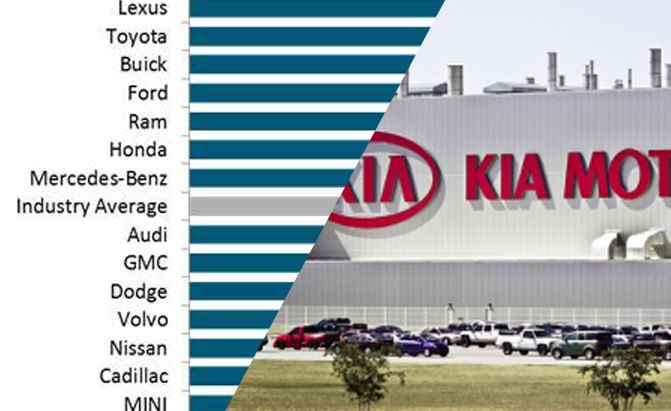












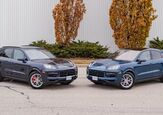
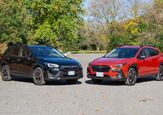
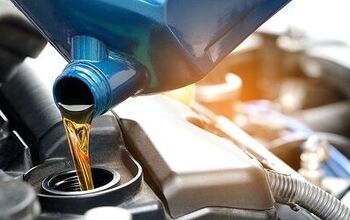
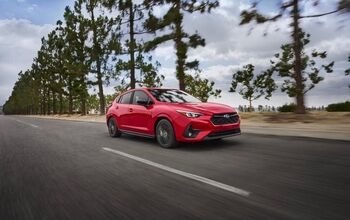
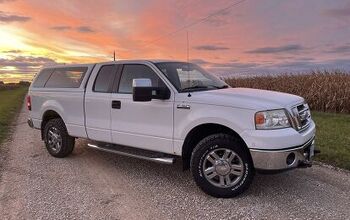











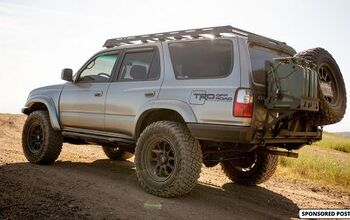



Comments
Join the conversation
I have a 2012 Kia Optima. A few problems have come up, but not mechanical. The navigator couldn't find a college or the street it has been on for over 100 years, even from a mile away. They replaced the system twice. The backup camera stopped. They replaced it. The emblem on the hood lost half its black paint. Weirdly, it was replaced under warranty. Go figure. Mechanically, fine, although the mileage, as expected is nowhere near the label said it would be. It's ok, but not very good in local driving with the a/c on. But, fine at high speed...
Let me tell you how the Asian car makers do business and American one do. I have KIA Rondo purchased in 2008 model 2008. Except oil and air filter change not a single problem I had in this car. Then I purchased Chrysler 200 model 2015. I did it thinking that it will help to keep job in our country. That time I did not look at J.D.Power study which show the Chrysler almost is in the bottom of all car makers. I went to dealer and they show me a car so beautiful inside that make me to buy the car. I made the deal and sign the papers and paid deposit. The car I saw it has mark 200 nothing else. I did not know that there are many models in Chrysler 200. But when I went to pick up the car I was given a car that is the lowest of the model. I complain but they told me that I signed the paper to purchase this car. I complain to Chrysler but I was told they have nothing to do with what dealers do as they only make car. Now I am stuck with this car. But here is the thing. I have brought my Chrysler car five times to Dealer for repair the Transmission problem and still they could not fix it. It is only eight months old has 5000 KM on it. On the other hand my wife's KIA Eight years old and we just received a letter that they want to under coat her car full for free to protect from rusting as in Canada we have too much salt on the road. After rust proofing I received a letter for study how I was treated by the dealer personalty. On the other hand when I complain about how I was treated by the Chrysler dealer Chrysler reply me that they have nothing to do with what dealer do. So my question to the directors of Chrysler how long the Chrysler will last and how many times tax payers have to pay to save Chrysler and the high paid jobs for the directors? Before you buy any car think twice. Shame on you Chrysler Shame on you the high paid directors.